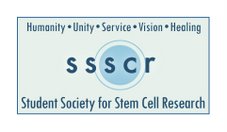| | |
| NEWS | Fabricated stem cell line origin revealed Woo-suk Hwang et al.'s original embryonic stem cell line derived from parthenogenesis, new study confirms [Published 2nd August 2007 05:30 PM GMT] |
| | |
| The embryonic stem cell line that South Korean researchers claimed was the result of somatic cell nuclear transfer was in fact derived via parthenogenesis, researchers have confirmed. While parthenogenesis does not result in a viable embryo in mammals, researchers say the findings provide increasing support for the idea of using it to derive human embryonic stem cells for research and therapy. A committee formed by Seoul National University (SNU) concluded last year that the 2004 cell line in question was not derived from SCNT. DNA fingerprinting suggested the line was formed via parthenogenesis, but SNU investigators later admitted to Korean media that the technique couldn't determine for sure how the line was derived. The new study, published this week in Cell Stem Cell, evaluated the cell line using genome-wide analysis and confirmed it was the result of parthenogenesis. The study "basically validates it genetically once and for all" that the line was derived from parthenogenesis, John McLaughlin, from the University of Pennsylvania, who was not involved with the study, told The Scientist. The researchers are "to be commended in bringing 'closure' to a scientific story," Renee Reijo Pera, director of human embryonic stem cell research and education for the Stanford Institute for Stem Cell Biology in Palo Alto, Calif., who was not involved with the study, wrote in an Email to The Scientist. "In addition, it provides evidence, that is accumulating, of the potential of human parthenogenesis for generation of [human embryonic stem cell] lines." The group, led by George Daley of Children's Hospital Boston, conducted a genome-wide analysis of single nucleotide polymorphisms (SNP). They compared the Korean stem cell line from other parthenogenetically derived stem cell lines, finding that the chromosomes of these cells underwent more genetic reshuffling than originally expected. The derivation "really remained to be analyzed and then subjected to peer review," Daley told The Scientist. "Nobody had really done a careful analysis of a large enough number of parthenote lines" to know what genetic patterns to expect, he said. "The misconception at the time was that parthenote cells should be predominantly homozygous with a very small amount of heterozygosity. The study "sort of caps off this detective story of what really did [Hwang and colleagues] have," said Kevin Eggan, of Harvard University, who was not a co-author. "What the study indicates is that, during the process of trying to do the process of somatic cell nuclear transfer, [Hwang and colleagues] failed to remove the chromosomes from one of the eggs as they were doing the manipulations, Eggan said if Hwang's group had known they had isolated a parthenogenetically derived stem cell line, "it still would have been a major advance." The first account of the isolated human parthenogenetic stem cell line was published just last month, by researchers from Lifeline Cell Technology in Walkersville, Md., in collaboration with Russian scientists. A group of Italian researchers had previously presented similar findings at a meeting, but results are as yet unpublished. There is "pretty good evidence now that parthenogenesis is very possible," McLaughlin said. He and others have found that parthenogenetically derived stem cells can help reconstitute blood cells in mice. But he added that parthenogenetically derived embryos in mammals don't develop normally, and some of the reasons for this "might preclude the use of these stem cells for therapeutic purposes." Daley and colleagues are now designing a protocol for asking young women with genetic diseases to donate eggs for making patient-specific, disease-specific parthenogenetic stem cell lines. Meanwhile, they are conducting mouse studies to see whether parthenogenetic embryonic stem cells can form functional tissues. "It remains to be seen whether parthenote derived cells are going to be functional or normal," Daley said. McLaughlin said in humans there are several reports of parthenogenetic embryonic stem cell lines, but so far nothing to show for the extensive efforts to produce lines from SCNT embryos. "This really adds a negative tone to the prospects of somatic cell nuclear transfer. It's kind of a dying hope at the moment," McLaughlin said. Kelly Rae Chi mail@the-scientist. Links within this article I. Oransky, "All Hwang human cloning work fraudulent," The Scientist, Jan. 10, 2006. http://www.the- Readers and Editors of The Scientist, "Cracking Cloning," The Scientist, June 2007. http://www.the- C. Holding, "1st mouse by parthenogenesis? http://www.the- S. Pincock, "Seoul University to investigate Hwang cells," The Scientist, Dec. 12. 2005. http://www.the- Seoul National University http://www.useoul. K. Kim, et al., "Recombination signatures distinguish embryonic stem cells derived by parthenogenesis and somatic cell nuclear transfer," Cell Stem Cell, Sept. 2007. http://obgyn- George Daley http://www.children Kevin Eggan http://www.mcb. E. S. Revazova, et al., "Patient-specific stem cell lines derived from human parthenogenetic blastocysts, http://www.the- Lifeline Cell Technology, LLC http://www.lifeline J. Marchant, "Human eggs supply 'ethical' stem cells," Nature, June 29, 2006. http://www.the- S. Eckardt, "Hematopoietic reconstitution with androgenetic and gynogenetic stem cells," Genes & Devel, Feb. 15, 2007. http://www.the- | |
Change settings via the Web (Yahoo! ID required)
Change settings via email: Switch delivery to Daily Digest | Switch format to Traditional
Visit Your Group | Yahoo! Groups Terms of Use | Unsubscribe
SPONSORED LINKS
.
__,_._,___










